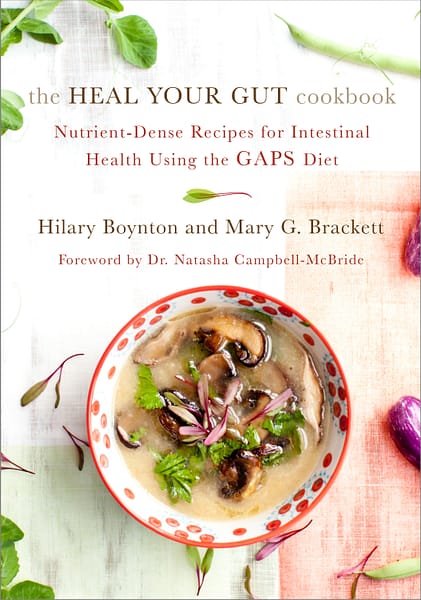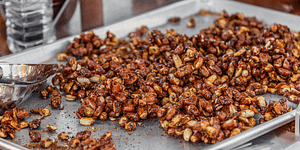Recipes and Meal Plans for Childhood Cancer

“Your child has cancer.” Every day, forty-three American families hear these words, thrusting them headlong into the terrifying and unfamiliar territory of pediatric oncology.
Finding meals that are both enjoyable and good for your child’s health can feel near impossible. Read on for some tips and recipes to inspire and help in one of the most stressful parts of implementing changes: nutrition.
The following is an excerpt from A Parent’s Guide to Childhood Cancer by Dr. Dagmara Beine. It has been adapted for the web.
Develop a Nutrition Plan
Our food crisis is real. In the United States, the majority of grocery stores are filled with highly processed junk food, fast-food restaurants have lines at every hour of the day, and many people have little knowledge about what real food is let alone how to prepare it. The standard American diet not only lacks nutrients but also often contains known carcinogens.
Even parents who consider themselves to be feeding their families a “healthy” diet often have no idea what they are allowing into their children’s bodies. For example, a child who eats a frozen waffle for breakfast is starting the day with bleached flour, processed seed oils, and high-fructose corn syrup. Lunch might be a salami and cheese sandwich on whole wheat bread, exposing them to the pesticides in the grain, processed seed oil in the bread, refined sugar, nitrates, antibiotics, and hormones. Spaghetti and meatballs with spinach salad for dinner is more of the same, unless the spinach is organic and the meat is from grass-fed animals raised by a conscientious farmer.
Where is the healthy fat needed for brain health? Where is the variety of plants and quality proteins for cell growth and healthy function?
For a child with cancer, nutrition is the foundation of healing, so starting today, it is time to get serious about your family’s nutrition and the quality of food coming into your home. By the end of this chapter, you’ll have an understanding of how to start your child on a nutrient-dense diet with the macronutrient profile that is the least conducive to cancer growth and also protective to healthy cells.
But first things first: If you do nothing else, feed your family real food.
Real food is easy to recognize: It has one ingredient. From there, the next step is to feed your family organic food, free of pesticides and herbicides. This is more complicated due to a confusing USDA certification system. While your best bet will generally be certified organic food as opposed to food without a certified organic label, that’s not universally true. Not all certified organic food is healthy; a lot of packaged organic food is full of refined sugar and other ingredients that you don’t want in your child’s body whether those ingredients are organic or not. Those organic cookies? Leave them on the supermarket shelf.
On the other hand, a lot of excellent healing foods won’t be labeled organic because, just like that carrot out of your home garden won’t be labeled organic, some farmers who use organic methods choose not to obtain the costly organic certification. So just because something isn’t labeled organic doesn’t mean it isn’t organic, especially if you’re buying from a small, local producer.
The bottom line? Always buy real food as locally as possible, get to know your farmers, ask questions, and when in doubt, spend the extra money to buy certified organic products free of herbicides and pesticides.
Meal Plans for Children With Cancer
Meal planning can be overwhelming for any family even when cancer is not a factor. In my experience, nutrition is often the most stressful part of implementing changes.
I have found having the right tools in our kitchen is key.
Invest in a good quality blender like a Vitamix. Buy a stain- less-steel slow cooker and an electronic pill crusher. Write out a list of your child’s favorite foods for every meal and then seek out recipes that make these in a healthier way.
You may be looking for a grain-free version, such as paleo or keto pancakes. In this way, you are still providing your child their favorite foods but with healthier ingredients.
Involving Your Child In Meal Plans
I have found that if you involve your child in making food, they are more likely to eat it.
There are many nutritious “keto” desserts you can make together and enjoy. I cannot stress enough the value of preparing food as a family. Fun plates and music and chef hats go a long way.
Sample Recipes & Meal Plans
Each of these recipes makes one serving, and they are made the same way: Combine all the ingredients in a blender and blend until smooth.
 Easy Breezy Super Soup (feeding tube only)
Easy Breezy Super Soup (feeding tube only)
- 2 cups homemade bone broth
- 1/2 avocado, sliced
- 1 tablespoon MCT oil, or olive oil if coconut allergy
- 1 scoop high-quality collagen powder
- 1 serving beef liver capsules, removed from capsules
Anti-Cachexia Smoothie
- 2 cups filtered water with ice, herbal tea, or homemade almond milk
- 2 tablespoons high-quality collagen powder
- 1 tablespoon ground flax seeds
- 1 tablespoon MCT oil
- 1/4 to 1/2 avocado, sliced
- 2 tablespoons protein powder, such as PaleoProtein
- 1 teaspoon vanilla
- 1 teaspoon omega-3 oil
- 1 teaspoon amino acid powder
Recommended Reads
Recent Articles
What’s so great about oyster mushrooms? First, you can add them to the list of foods that can be grown indoors! They are tasty, easy to grow, multiply fast, and they love a variety of substrates, making oyster mushrooms the premium choice. The following is an excerpt from Fresh Food from Small Spaces by R. J.…
Read MoreWant to start your own medicinal herb garden? Passionflower, lemon balm, and goldenseal are great places to begin! These herbs are jam-packed with medicinal properties and easy to grow in a majority of climates.
Read MoreCraving something sweet? These delicious maple roasted nuts are the perfect treat to help you push through those end-of-winter blues. The following is an excerpt from Full Moon Feast by Jessica Prentice. It has been adapted for the web. The Magic of Maple: A Rich History Following the Hunger Moon, just before the first thaw…
Read More











